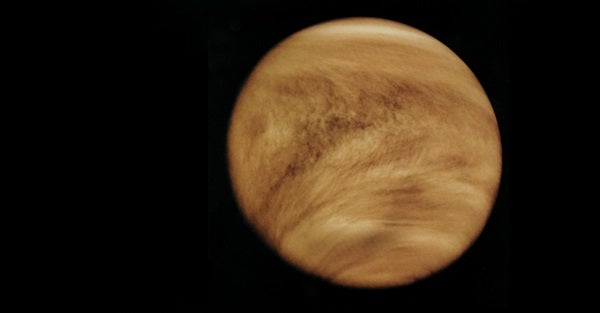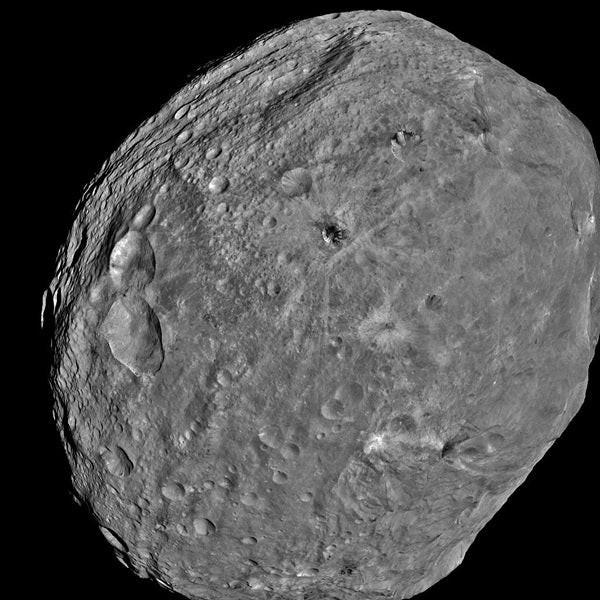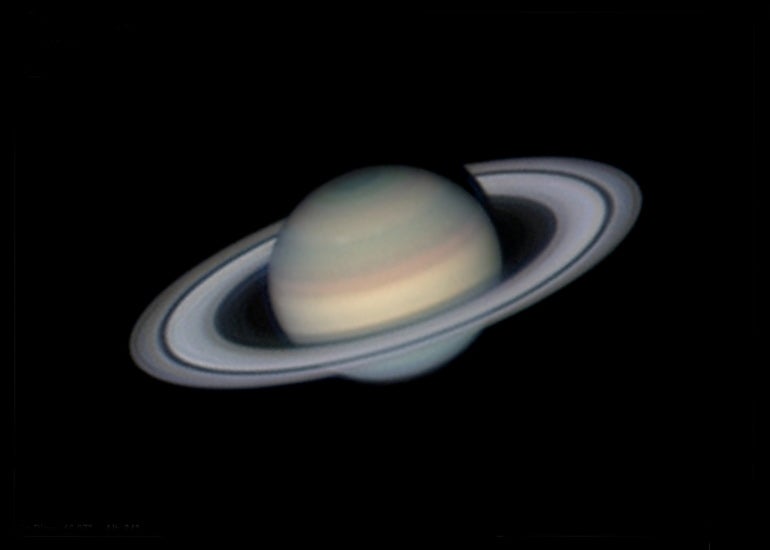• Venus appears brilliant in the early evening sky starting within a half-hour after sunset. Although it reached greatest elongation yesterday, when it appeared 47° east of the Sun, the planet will remain the evening sky’s brightest point of light through late March. It currently shines at magnitude –4.6, some 10 times brighter than the second-brightest object, Jupiter. Venus stands about one-third of the way from the southwestern horizon to the zenith 30 minutes after the Sun goes down and doesn’t set until nearly 9 p.m. local time. When viewed through a telescope this evening, Venus appears 25″ across and half-lit.
Saturday, January 14
• The waning gibbous Moon appears in the company of 1st-magnitude Regulus tonight. The pair rises in the east around 8 p.m. local time and climbs high in the south after midnight. Just 1° — twice the Moon’s apparent diameter — separates the two.
Sunday, January 15
• For those who recently caught the observing bug, the so-called Summer Triangle must seem like a huge misnomer. That’s because this asterism remains on view after darkness falls in January. Look for Vega, the fifth-brightest star in the sky and the brightest triangle member, low in the northwest. Deneb lies above Vega and about one-third of the way to the zenith. Deneb marks the top of another asterism, the Northern Cross, which stands nearly straight up from the horizon on January evenings. Altair, the third triangle member, scrapes the western horizon and sets shortly after 6:30 p.m. local time
Monday, January 16
• Mars continues to put on a nice show these January evenings. It appears to the upper left of Venus and some 30° above the southwestern horizon once twilight fades to darkness. The magnitude 1.0 Red Planet currently lies among the background stars of Aquarius, though it will cross into Pisces later this week. A telescope shows the world’s 5″-diameter disk, but you likely won’t see any surface detail.
Tuesday, January 17
• Asteroid 4 Vesta reaches opposition and peak visibility tonight. The brightest minor planet of 2017 shines at magnitude 6.2. That’s barely bright enough to see with the naked eye from under a dark sky, though binoculars make the task much easier. To find Vesta, start at magnitude 1.6 Castor in northern Gemini and draw a line to magnitude 1.2 Pollux. Continue that line to the south-southeast about twice the distance between the two stars until you land on 6th-magnitude Mu (m) Cancri. Vesta lies 2.2° northwest of Mu this evening.
Wednesday, January 18
• Jupiter dominates the morning sky in January. The giant planet resides in central Virgo, rising just before midnight local time and climbing halfway to the zenith in the southern sky by the time twilight begins. Jupiter shines brilliantly at magnitude –2.1 and shows a disk that spans 37″ when viewed through a telescope. A small scope also reveals the planet’s four bright moons, though you may have to hunt for one of them this morning. The shadow of Europa starts to transit Jupiter at 1:12 a.m. EST and takes 2.5 hours to complete its journey across the cloud tops. The shadow lifts back into space at 3:42 a.m., just one minute after the moon itself begins a transit on the planet’s opposite limb. Also keep an eye on Jupiter when it rises late this evening in the company of a waning gibbous Moon. The two lie just 3° apart.
Thursday, January 19
• Last Quarter Moon occurs at 5:13 p.m. EST. The Moon doesn’t rise until nearly 1 a.m. local time tomorrow morning, however, by which time it will appear slightly less than half-lit. The Moon spends the morning hours on the border between Virgo and Libra.
• Mercury reaches the peak of its current apparition this morning. The innermost planet lies 24° west of the Sun at 5 a.m. EST and appears 10° above the southeastern horizon 30 minutes before sunrise. Shining at magnitude –0.2, it shows up nicely through the twilight glow. (If you don’t spot it right away, binoculars will bring it into view.) A telescope reveals Mercury’s 7″-diameter disk, which appears slightly more than half-lit.
Friday, January 20
• One of the sky’s most familiar constellations rules January’s sky from dusk until the early morning hours. Orion the Hunter appears conspicuous in the southeast after darkness falls and climbs highest in the south around 9 p.m. local time. It then stands about halfway to the zenith from mid-northern latitudes. The night sky’s brightest star, Sirius, trails about an hour behind Orion.
• Jupiter passes 4° due north of 1st-magnitude Spica, the brightest star in Virgo the Maiden. The brilliant planet shines nearly 20 times brighter than the star.
Saturday, January 21
• Although Saturn passed on the opposite side of the Sun from Earth in December, it already appears low in the southeast before morning twilight commences. From mid-northern latitudes, the ringed planet lies about 10° above the horizon at the start of twilight. It shines at magnitude 0.5, which makes it the brightest point of light in its host constellation, Ophiuchus the Serpent-bearer.
• The Moon reaches apogee, the farthest point in its orbit around Earth, at 7:14 p.m. EST. It then lies 251,602 miles (404,914 kilometers) from Earth’s center.
Sunday, January 22
• Two of the finest deep-sky objects shine prominently on evenings during January. The Pleiades and Hyades star clusters appear highest in the south in early evening but remain conspicuous until well past midnight. The Pleiades, also known at the Seven Sisters and M45, looks like a small dipper to naked eyes. The larger Hyades forms the V-shaped head of Taurus the Bull. Although both look nice with naked eyes, binoculars show them best.












